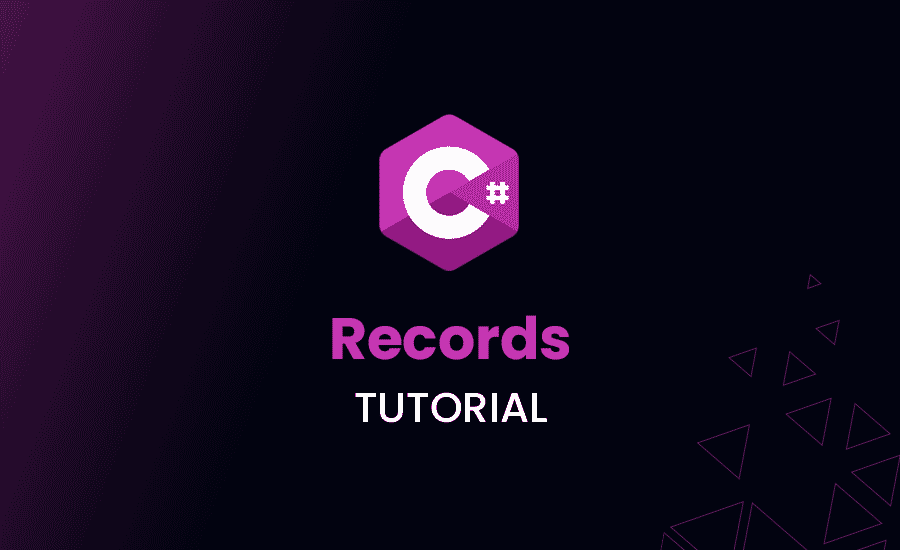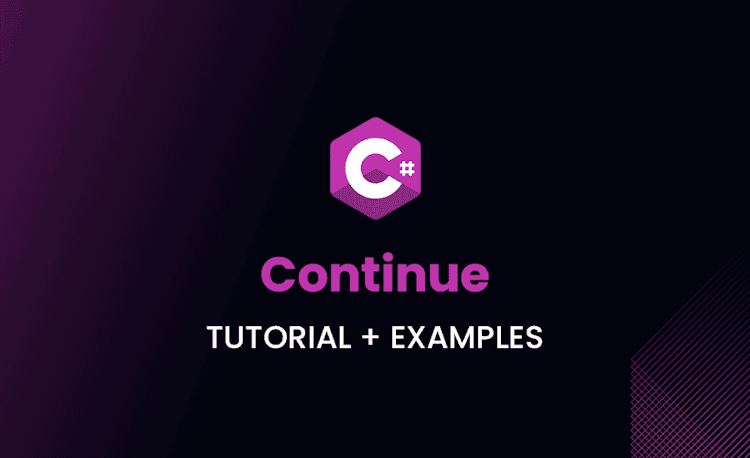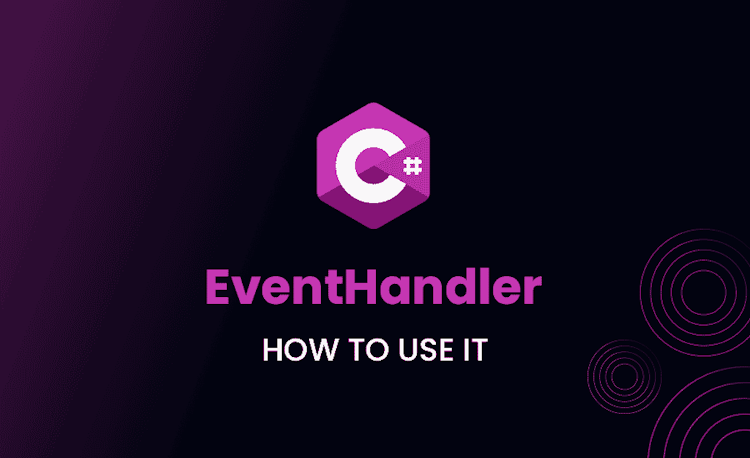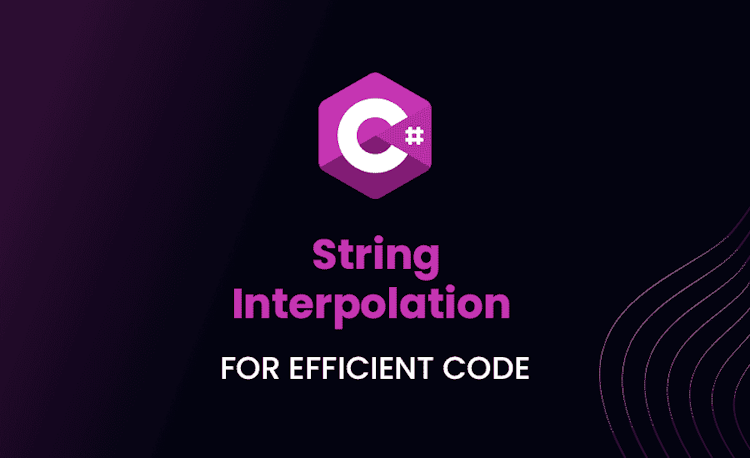Creating and Working with Records in C#: Tutorial

Immutability is a concept that has been widely adopted in several programming languages. C# has been patiently waiting for a dedicated feature for this, and voila, records are here! In this article, we will explore all the nuts and bolts of C# records, ratify every myth and question surrounding records and classes, delve into the C# record constructor, reflect on inheritance, and understand how private records work in .NET. It’s going to be quite a ride!
C# Records
Ever stumbled upon a piece of code filled with boilerplate just to make a class immutable? Good news; C# records to the rescue!
What are C# Records?
C# Records are a new kind of type declaration – they’re similar to classes, but they’re suited for developing immutable data models out of the box. Records, to put it simply, can be summarized as Simple-Immutables-Simplified.
Consider the following Record:
Loading code snippet...
You’ve just defined an immutable type named ‘Person’ with two properties, ‘Name’ and ‘Age’. That was easy, wasn’t it?
The Syntax of C# Records
The simple syntax of a record is yet another of its perks. Just line ‘classes’ and ‘structs’, you can declare ‘records’ with properties, methods, and events.
Loading code snippet...
The ‘init’ keyword ensures the properties are immutable, i.e., once assigned, they can’t be changed.
But you might be wondering, what about value equality? Here’s another cool thing about records – they bring ‘value equality’ into play, rather than ‘reference equality’, which conventional classes use.
Delving into the Details: C# Record Types
Let’s break it down and dive deeper into the abyss of C# Record types.
Understanding the Structure of C# Record Types
Here’s the code-example illustrating the structure and key elements of a C# Record.
Loading code snippet...
In this case, the Employee record consists of three properties. ‘Name’ and ‘Department’ are self-explanatory, but ‘Manager’ is a nested declaration within the Employee record – an Employee type inside Employee.
When to Use C# Records
Record in C# should be used when:
- You need a type primarily defined by its data, and this data is immutable.
- You need value equality – “Are these two things the same?” rather than “Are they the same object?”
So, isn’t it splendid how records encapsulate the essence of object-oriented programming? They’re quite the game-changer!
C# Record vs Class: A Comprehensive Reality Check
As Coders, we grapple with design decisions every day. Such a common predicament is when to use a class and when to opt for a record in C#. The fascinating world of programming languages is full of such dilemmas, and each choice can parley into diverse results.
Distinguishing the Functionality: C# Record vs Class
Indeed, C# records and classes are akin but have distinctive behaviours, especially around immutability and equality. But how about we get our hands dirty and write some code to unravel the differences?
Loading code snippet...
The comparison of country1 & country2 returns false even though they have identical properties. It’s because classes in C# compare references, not the contents.
Now, let’s contrast this with records:
Loading code snippet...
Wowza, it returns true. So, records in C# are different – they factor in the contents for comparison, not just reference! They are immutable and possess value semantics. Ain’t that nifty?
Realistic Use-Case Scenario: C# Record vs Class
Remember our old friend, the Product Catalogue, in an e-commerce application? Here’s where our recently learned knowledge comes into play. Let’s consider two classes, ProductClass and ProductRecord:
Loading code snippet...
For largely immutable entities like a product catalogue, employing records makes sense. You get a concise, immutable object with equal-to and copy semantics out of the box. You can also update properties using the with keyword while retaining the immutability:
Loading code snippet...
However, when objects require mutable state, classes still emerge victoriously. Imagine a Shopping Cart class in the same e-commerce application. You continually add, remove items, indicating a frequent change of state. Leveraging classes here is more fitting.
Each tool has its place. Isn’t that the philosophy of good programming?
Recorder C#: Automated Testing
We, coders, often find ourselves in a bind when dealing with UI tests. Wouldn’t it be great if we could just record our browser interactions and convert them into C# code for WebDriver-based UI tests? Well, that’s precisely what Recorder C# does for you!
Loading code snippet...
The Start method tells the recorder to start recording and the Stop method to stop. The rest is all your interactions with the UI!
Mastering the C# Record Constructor
A constructor’s primary function is to initialize the object of a class. But in C# records, a constructor does more than that!
Streamlining Constructors with C# Records
Records break the traditional mould of constructors. Just look at this tidy piece of code!
Loading code snippet...
Here, in merely one line of code, you’ve given birth to a record with a constructor accepting two parameters and associating them to the read-only characteristics of the object. Talk about efficiency!
Crafting a C# Record Constructor
However, if your constructor requires additional logic or even validation of parameters, records can cover that too:
Loading code snippet...
Need to validate input? You can add validation checks right inside the constructor. It’s like having your cake and eating it too (figuratively speaking)!
Understanding C# Record Inheritance
The Concept: C# Record Inheritance
Records inherit from other records. How cool is that? Records use the keyword ‘record’ instead of ‘class’ for inheritance. Take a look:
Loading code snippet...
Here, ‘Truck’ record is inheriting from the ‘Vehicle’ record. Talk about keeping the lineage clean!
Taking Advantage of C# Record Inheritance
Remember, records are sealed by default. If you want to allow other records to inherit from a base record, be sure to include the sealed modifier:
Loading code snippet...
It’s stunning how much thought is put into extending and improving C# towards a more immutable future!
C# Record Property: Tweaking and Modifying
Let’s shed some light on how you can tweak and modify properties in C# Records.
Blessing of Immutability: C# Record Change Property
Records in C# are immutable, but there are times when you need a copy of a record with one or more properties modified. C# Record has the ‘with’ keyword for this. Magic, isn’t it?
Loading code snippet...
Here, bobTwin is a new record, based on Bob, but it’s not Bob. Mind=blown!
Decoding the Differences: C# Record vs Record Struct
To struct, or not to struct, that’s the conundrum!
Understanding the Key Distinctions
So what’s the brass tacks of C# Record and Record Struct? The essential difference is that by design, record class types use reference semantics for equality while record struct types use value semantics for equality.
Making the Right Choice: C# Record vs Record Struct
When faced with the choice between record class and record struct, always go for the one that fits your scenario. When in doubt, favor record class. The semantics of a reference type better align with how data models are typically used.
Exploring Private Records in .NET
Private Records in C#: An introduction
Ever wished for private record types in C#? Your wish is C#’s command! This incredible addition of private accessibility modifier to record types makes things immeasurably simpler.
Application and Use Cases of Private Records in .NET
A private record is useful when seeking to encapsulate operations within a type, and its details play no role in its public API. This makes it an ideal candidate for implementing Data Transfer Object (DTO) patterns and encapsulating algorithms.
Congratulations, folks! You’ve made it to the end of this enthralling journey through the vast landscape of C# records. We’ve covered everything from the basics, to scenarios for usage, to comparisons with classes, and we’ve even touched on C# Record Constructors, inheritance, property changes, and private records in .NET.
Action Time: Now, it’s time for you to apply these concepts and take advantage of this wonderful feature of C#.Warning: Remember, though records are awesome, they’re not a silver bullet for all scenarios. Sometimes, classes or structs might be just what you need.Remember: Think it through, always opt for the simplest solution that meets your need.
And remember, folks, code isn’t immutable, it’s your canvas. Paint it well!





